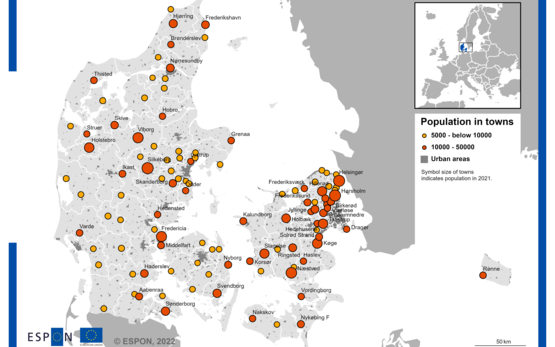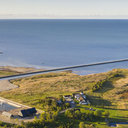Spotlight
-

Denmark, small and medium sized cities
Case Studies | August 25, 2022Looking for new activities and attractions to maintain vibrant town centres and develop appealing urban areas

Looking for new activities and attractions to maintain vibrant town centres and develop appealing urban areas

This report contributes to the Maritime Spatial Planning with two objectives: to undertake an analysis and characterization of the coastal and maritime planning and land-sea interactions from a mul

Article 174 of the TFEU states that: '’the Union shall aim at reducing disparities between the levels of development of the various regions and the backwardness of the least favoured regions.

This project, emanating from the targeted analysis project Maritime Spatial Planning and Land Sea Interactions (MSP-LSI) explores the potential spatial tensions between the deployment of renewable sources of blue energy (energy derived from our seas and oceans), with a particular focus on offshore wind energy, and other (potential) utilisations of the European seas.

This study analyses the implementation of an Integrated Territorial Investment (ITI) targeting small islands of the North Aegean Region in the 2014-2020 programming period, considering observed pat

The ESPON Synthesis Report II presents integrated ESPON results (status spring 2005) on basic territorial structures, dynamics and policy impacts. It intends to contribute to the process of carrying through the re-launch of the Lisbon strategy and to enable a better understanding of the framework conditions necessary for identifying and mobilising the territorial capital of individual regions and of larger territories across Europe.

The ESPON Atlas provides a synoptic and comprehensive overview of findings from ESPON Projects of the 2006 Programme.

“The accelerating globalisation and new emerging markets will have major impacts on Europe and its territory, cities and regions”, states the freshly in print Europe in the World Report of ESPON, the European Observation Network on Territorial Development and Cohesion.

The ESPON poster tries to attract people’s attentions with some carefully selected maps and words allowing a quick first understanding what ESPON is about.

In the ESPON Briefing 2 a variety of current European trends are analysed in order to come to a better understanding a number of factors which need to be taken into account in relation to the Lisbon Strategy. The territorial diversity of factors like the global economy, regional imbalances, service sector specialisation, transportation, governance, demography and cultural innovation are presented so as to support a diversified assessment of the current situation.

Until the Seminar in Nijmegen, every ESPON seminar was followed by a "guidance paper" elaborated by the coordinating projects: ESPON 3.1 and ESPON 3.2.

The ESPON Synthesis Report I is a tool for the ongoing debate of issues related to the structure, cohesion and development of the European territory. The purpose of the report is to communicate the progress made within ESPON after the first year of activities.

The purpose of this second ESPON Scientific Report is to document the progress made on building a scientific platform for applied European territorial research.